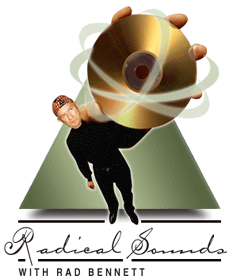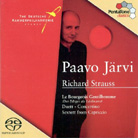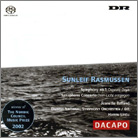 |
| June 1, 2005 Seeing Double, Hearing Triple Why two? Why two?
When I recently received copies of live recordings of Tchaikovsky’s fourth and fifth symphonies, with Valery Gergiev conducting the Vienna Philharmonic, I thought it strange that Philips had sent me two copies of each. I put one on, listened casually, and thought it the worst SACD I’d ever heard. Then two light bulbs lit up -- not only were these discs actually CDs, but my receiver was set in DTS Neo:6 mode and was synthesizing multichannel effects. I then played the actual SACDs (which explained the double shipment). They sounded excellent. There are two lessons to be learned here. The first is that SACDs do sound markedly better than regular CDs. When I’ve listened to SACDs for several days at a stretch, a regular CD will sound dull and ill-defined by comparison, and almost immediately cause fatigue as my overburdened brain tries to fill in the missing digits. Anyone who can’t tell the difference might have had his or her listening irreparably corrupted by too many quickie downloads from the Internet. Second, here we are, far into the era of SACD (many will say we’re at the end of it), and companies are still carrying double inventory. If I can make a mistake like the above, the double-inventory situation must be a nightmare for storeowners, and perhaps even for mail-order organizations. How do you tell the discs apart without listening? Most are packaged identically, except for the stickers that indicate the presence of a hybrid SACD. The thought at first was to use a special jewel case with rounded corners for SACDs, but many companies have ditched that idea. The latest Telarc releases, for instance, have come to me in regular jewel boxes. If a title were issued on a single format, a hybrid SACD/CD, there would be no problem -- just file it away in the store like a regular CD. Those not interested in SACD would be none the wiser and none the worse off, because the disc would play in their CD players -- and those seeking the SACD version would get the sound they wanted. No one could go wrong. Back in the vinyl days, EMI quietly released dozens of quad LPs. No one was the wiser until EMI disclosed that all of the discs on which the Angel logo was surrounded by a circle instead of the usual square were quad. People who wanted quad equipment already had a lot of quad software in their collections. People who couldn't care less were enjoying their copies as regular stereo LPs. The newest spinoff format, DualDisc, seems to be marketed with a single-copy strategy. The first release of Bruce Springsteen’s new album is DualDisc, as is a recent disc by Rob Thomas. I was able to visit two local mall stores here, neither a haven for audiophiles, and confirm that the DualDisc was the disc to buy if I wanted the latest statements by those artists. That’s simply what they had in stock, sitting right next to regular CDs. The problem here, of course, is that the DVD sides of these discs offer different configurations for the multichannel tracks: advanced-resolution DVD-Audio on the Thomas, compressed Dolby Digital on the Springsteen (though the latter does offer high-resolution PCM 24/96 stereo tracks). But if companies are willing to make one version of a new pop release, why not a single version of every SACD/CD hybrid? It boggles the mind that any marketing maven could be so shortsighted, or any company so greedy, as to cut off its nose to spite its face. I hope the folks who have virtually ensured SACD’s demise won’t be marketing the two new blue-laser disc formats. Three is still magic Five more releases have been added to the list of Mercury Living Presence recordings available on hybrid SACDs. Again, having a three-channel configuration to reproduce the sound of these original master tapes is a winning situation. One of the best of the new releases is Antal Dorati’s exciting, idiomatic traversal of Liszt’s Hungarian Rhapsodies [474 6185]. The cimbalom, a twangy Hungarian folk instrument also known as a hammer dulcimer, is anchored in the center channel and can be clearly heard at all times. The left and right channels, freed of their work to reproduce a phantom center channel, are cleaner and more transparent than those on the previously issued two-channel CD. Concerto recordings, too, benefit greatly from the center channel. In the recordings by János Starker [474 6608] and Byron Janis [474 6607], the soloists are rock solid in the center position, the orchestras spread behind and to the sides. I hope SACD will stay alive until Mercury can reissue most of its major releases in the three-channel format. Still missing: Dorati’s dynamic recording of Prokofiev’s Scythian Suite, Paul Paray’s reading of the Saint-Saëns Symphony No.3 ("Organ"), Howard Hanson’s definitive readings of Bloch’s Concerti Grossi and Chadwick’s Symphonic Sketches, and Frederick Fennell’s impossible-to-beat Lincolnshire Posy, by Percy Grainger. A big thanks . . . . . . to Silverline. In a recent column on DualDisc, I lamented the fact that one of my favorite recordings, the Big Phat Band’s XXL, was not playable in my car because it was available only on DVD-Audio. Silverline has since sent me a recently released DualDisc of the album [284104-2]. The multichannel DVD-A side sounds just as good as before and the extras are just as cool, but now I can play the CD side in my car in immaculate stereo. Now one of my favorite discs can travel with me anywhere. Another score for a single disc that does double duty! Here are the three winners that made the Radical cut this month:
Paavo Järvi is best known in the US as music director of the Cincinnati Symphony, but overseas he concurrently holds the same position with the virtuoso Deutsche Kammerphilharmonie Bremen. I was excited to hear his first SACD release with this orchestra, a collection of shorter Stravinsky compositions featuring the suite from L’Histoire du Soldat. I felt at that time that he got better results in Germany than he does in the US, and this most recent release strengthens that idea. The German musicians play superbly for him, and he seems more relaxed yet vitally alive. The music making, though precise, has a laid-back sense of humor and lyrical feeling that are bewitching to hear. The neoclassical Le Bourgeois Gentilhomme music is long on charm and devoid of sentimentality. The recorded sound is exceptionally transparent -- seldom have the strands of this composition been heard so clearly -- yet there is cohesion as well. The piano, important in the scoring, is solid but sounds like part of the ensemble rather than being highlighted as a solo instrument. The frequency and dynamic ranges are wide. The recorded perspective is that from mid-hall, yet with no loss of presence. The surrounds are used for ambience only, and properly employed at that. This recording is a winner all the way -- if I were you, I’d go out and buy it right away. While you’re at it, pick up Järvi’s Stravinsky disc [Pentatone 5186 046], which is just as well played and even better recorded.
This disc contains works composed within the last ten years by Sunleif Rasmussen, born in 1961 in the Faroe Islands. Rasmussen’s early musical days were spent as a composer and performer of experimental jazz and rock, but with his latest compositions he has established himself near the forefront of a new breed of Nordic composers. These two works are stringent and dissonant yet quite accessible. The orchestration is the most colorful I have heard in quite a while -- Rasmussen uses lots of vibraphone and various struck bells, to great effect. Both works include passages in which the string players are instructed to sing along with the notes they play, which creates either a very human or a very eerie effect, depending on the passage. And in the symphony’s final movement there is an extended solo for tuba. One never knows what to expect from Rasmussen, but what one hears always sounds exactly right. Both the saxophone soloist and the orchestra play with precision, assurance, and beautiful tone. The sound is a marvel, singularly rich and reverberant yet with ultimate detail. In the third movement of the concerto, Rasmussen calls for a section of the orchestra to be placed way backstage; at times, a woodwind quintet accompanies the soloist. Some of these effects are relegated to the rear channels in a very effective manner. The frequency and dynamic ranges are as wide as I’ve heard -- the music ranges from barely audible pianissimo to thundering statements by full orchestra. I can’t say enough good things about this SACD. I don’t give ratings here, but if I did, this disc would receive the highest possible.
Is there a person alive who has not heard "We’ve Only Just Begun," "Rainy Days and Mondays," and "(They Long to Be) Close to You" countless times on the radio? The Carpenters are still heard so often on the airwaves that there is a tendency to take them for granted. This gorgeous disc ought to put an end to such flippant dismissal. Richard Carpenter himself has participated in the multichannel remixes of this material, creating subtle new versions of these hits that made me feel as if I were hearing them for the first time. The mixes are luminous and transparent, the high resolution allowing tiny subtleties to be clearly heard. The sound wraps all the way around the listener but never detracts from the main feature: Karen Carpenter’s warm, assured, comforting vocals are always up front. The bass is solid without being overdone. In fact, the whole disc serves as an example of how to use immaculate taste and care in fashioning new versions of old favorites. If you’re too young to remember the originals, this disc will make you wish you’d been there, and grateful you can revisit the sessions in such style. ...Rad Bennett
Ultra Audio is part of the SoundStage! Network. |
 Richard Strauss: Le Bourgeois
Gentilhomme Suite; Duet-Concertino for Clarinet and Bassoon; Sextet from Capriccio
Richard Strauss: Le Bourgeois
Gentilhomme Suite; Duet-Concertino for Clarinet and Bassoon; Sextet from Capriccio Rasmussen: Symphony
No.1, "Oceanic Days;" Saxophone Concerto
Rasmussen: Symphony
No.1, "Oceanic Days;" Saxophone Concerto The Carpenters: Singles
1969-1981
The Carpenters: Singles
1969-1981